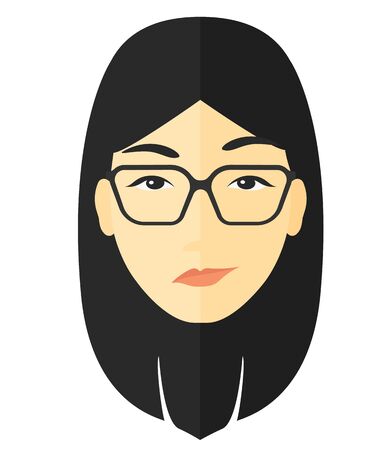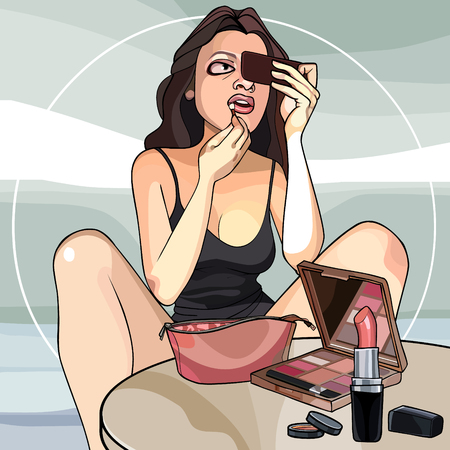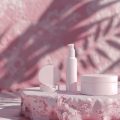Introduction to At-Home RF Skin Tightening
If you’re a skincare enthusiast or a beauty aficionado in the UK, you’ve probably heard the buzz around at-home radiofrequency (RF) skin tightening devices. These chic gadgets are making waves on bathroom shelves and vanities up and down the country, promising salon-worthy results without the faff of booking an appointment. But what exactly are these futuristic-looking tools? At-home RF devices harness the power of radiofrequency energy—a technology once reserved for professional clinics—to target sagging skin, fine lines, and loss of firmness right from the comfort of your own home. With the British beauty scene always on the lookout for innovative and effective solutions, it’s no surprise that these devices have skyrocketed in popularity, blending high-tech science with everyday convenience. Whether you’re after a more sculpted jawline or simply keen to keep your complexion looking youthful and radiant, understanding how these handheld wonders work is key to getting the most out of your at-home treatments.
2. The Science of Radiofrequency Technology
If you’re wondering what’s really happening beneath the surface when you use an at-home RF device, it’s all about a fascinating blend of physics and skin biology. Radiofrequency (RF) technology harnesses controlled heat energy to stimulate your skin’s natural rejuvenation processes, offering a non-invasive way to achieve a firmer, more youthful complexion right from your living room in London or Leeds.
How Does RF Technology Work?
RF devices emit gentle electrical currents that produce heat as they pass through the skin’s layers. This thermal energy targets the dermis—the deeper layer where collagen fibres are abundant—without damaging the surface. The magic lies in how this heat interacts with your skin’s structure.
The Physics Behind the Process
Essentially, RF energy causes water molecules in your tissue to oscillate, generating friction and, subsequently, heat. This carefully monitored warmth tricks your body into thinking there’s been a mild injury, activating a natural healing response. As a result, fibroblast cells get to work, ramping up collagen and elastin production for plumper, tighter skin.
Key Effects of RF on Skin
| Action | Skin Response | Visible Benefit |
|---|---|---|
| Thermal stimulation | Boosted collagen synthesis | Smoother texture & fewer fine lines |
| Controlled micro-injury | Tissue remodelling | Lifting and tightening effect |
| Enhanced blood flow | Improved cell turnover | Glowing, more even complexion |
Is RF Safe for At-Home Use?
The latest generation of at-home RF devices is designed with British safety standards front and centre. They use precise temperature controls and built-in sensors to ensure the heat remains within safe limits—so you can enjoy professional-inspired results without stepping foot outside your flat.

3. Benefits and Realistic Expectations
At-home RF skin tightening devices have become a beauty buzzword across the UK, but what can you really expect from these sleek gadgets? Let’s break down the potential perks and set the record straight on results for British skin tones, lifestyles, and skincare goals.
Firmer, Plumper Skin
One of the main appeals of radiofrequency technology is its ability to stimulate collagen production beneath the surface of your skin. With regular use, many users report noticeably firmer and more plumped-up skin—think that fresh-from-a-facial look without stepping foot in a clinic. Fine lines may soften, and cheeks might gain a subtle bounce that’s reminiscent of your favourite A-lister’s dewy glow.
A Subtle Boost Rather Than a Miracle
It’s important to keep things real: at-home RF devices are designed for gradual improvement rather than dramatic, overnight transformations. Most British users notice modest enhancements over several weeks or months, especially when paired with healthy habits like SPF protection and proper hydration (yes, even on those classic rainy London days!).
Convenience Meets Consistency
The convenience factor cannot be overstated—no waiting lists, no commutes, just salon-inspired treatments in the comfort of your own home. For busy professionals or parents juggling school runs and Zoom calls, this accessibility is an absolute game-changer. But remember, consistency is key. Using your device as directed will yield the best results; skipping sessions will likely mean missing out on that coveted glow.
Who Will See the Best Results?
While RF technology is suitable for most skin types found across Britain’s diverse population, those with mild to moderate laxity tend to see the most noticeable benefits. If you’re hoping to address deeper wrinkles or sagging, an in-clinic procedure might still be necessary—but at-home devices can certainly help maintain professional results between visits.
Managing Expectations
Ultimately, think of at-home RF as part of your long-term skincare wardrobe—like adding a timeless trench coat or perfecting your signature red lip. It won’t replace surgical procedures or professional-grade treatments, but it does offer a smart way to invest in your skin’s future with realistic expectations firmly in place.
4. Safety, Side Effects, and Dermatologist Perspectives
When it comes to at-home RF (Radiofrequency) skin tightening devices, safety is naturally a top concern—after all, no one wants to risk their complexion for the sake of a beauty trend. The British beauty scene has seen an uptick in these high-tech gadgets, but what do experts say about their use from the comfort of your own flat?
Understanding the Safety Profile
Most at-home RF devices are designed with lower energy outputs than professional machines, making them generally safe for home use if you follow the manufacturer’s guidelines. Built-in safety features—like automatic shut-off and skin contact sensors—are standard in reputable brands sold across the UK. However, the NHS and dermatologists alike caution that using uncertified or imported devices can increase risks.
Common Side Effects: What to Expect
| Side Effect | Frequency | Duration | Advice |
|---|---|---|---|
| Mild redness | Common | Up to a few hours | Usually resolves spontaneously; apply a cool compress if needed |
| Slight swelling | Occasional | A few hours to 1 day | Avoid heat exposure post-treatment; keep skin hydrated |
| Tingling sensation | Common during treatment | Immediate; fades quickly after use | No action needed unless discomfort persists |
| Bluish marks or burns* | Rare (usually misuse) | Varies; may require medical attention | If severe, consult a healthcare provider promptly |
*Burns are rare with CE-marked UK devices when used according to instructions.
The UK Dermatologist Take: Expert Advice for Safe Usage
British dermatologists recommend:
- Patch Test: Always perform a patch test on a small area before full-face application.
- Cleansing: Start with clean, dry skin—free of makeup or heavy skincare products.
- Treatment Frequency: Stick to the frequency recommended by your devices manufacturer; overuse won’t speed up results and may irritate your skin.
- Avoid Sensitive Areas: Steer clear of eyes, lips, and any broken or inflamed skin.
- If in Doubt: Consult your GP or a certified dermatologist, especially if you have underlying skin conditions like eczema or rosacea.
- Sunscreen is Non-Negotiable: Post-treatment, always apply SPF—even in rainy London!
The Bottom Line on At-Home RF Safety in the UK Beauty Scene
While at-home RF tools offer an alluring promise of tighter, more youthful skin without stepping into Harley Street clinics, their safety profile largely depends on responsible use. Choose CE-marked devices from reputable retailers, follow best practices, and remember: when in doubt, trust the pros for guidance tailored to your unique British complexion.
5. How to Use At-Home RF Devices Effectively
So, you’ve decided to bring a touch of high-tech glamour into your skincare routine—brilliant move! But, as anyone on the British beauty scene will tell you, getting the most out of your at-home RF (Radiofrequency) device takes more than a quick zap and go. Here’s your practical guide to making these gadgets work their magic, straight from the UK’s most clued-up skincare insiders.
Best Practices for Flawless Results
First things first: always start with freshly cleansed skin. Any lingering makeup or grime can interfere with the device’s conductivity—and nobody wants that. Apply a conductive gel (many devices come with one, but if not, a water-based gel does the trick), as this helps the RF waves penetrate more evenly and comfortably.
Glide the device in slow, steady motions, working in small sections. Think of it as giving yourself a facial massage—slow and thorough wins the race. Keep the head moving to avoid overheating any one area, which can cause irritation. Most devices have an automatic timer, but if yours doesn’t, stick to 10-20 minutes per session depending on your gadget’s guidelines.
How Often Should You Use It?
The golden rule here is “little and often.” For most at-home RF devices approved in the UK, two to three times a week is spot-on for visible results without overdoing it. Think of it like going to a Pilates class—you want consistent effort for long-term tone and lift. Overuse won’t speed up results; instead, it could leave skin feeling sensitive.
Aftercare: Locking In That Glow
Once you’ve finished your session, treat your skin to some classic post-procedure TLC. A cooling gel or lightweight moisturiser works wonders to soothe any warmth or redness. Avoid harsh exfoliants or retinol right after treatment—your skin’s just had a workout and needs to chill out. And don’t forget SPF if you’re heading out; even in cloudy Blighty, UV protection is key.
Insider Tips from British Beauty Buffs
If you want that A-list radiance, consistency is everything. Set a reminder on your phone or pair treatments with your favourite show (Love Island binge-session, anyone?). Keep your device clean—wipe down after each use with an antibacterial wipe—and store it safely away from humidity. Finally, snap a selfie before you begin your journey; you’ll love tracking those subtle changes week by week.
6. UK Trends: What’s Hot and What’s Not
When it comes to at-home RF (radiofrequency) skin tightening devices, British beauty enthusiasts are never far behind the global curve—yet there’s always a uniquely UK twist in what’s trending. Across Instagram feeds, TikTok scrolls, and YouTube tutorials, it’s clear that our favourite homegrown influencers and celebs have their own preferences, often championing sophisticated yet subtle beauty tech.
Most Popular RF Devices in the UK
While international brands like NuFACE and Tripollar still dominate the conversation, British shoppers are also turning towards homegrown favourites such as Sensica Sensilift and CurrentBody Skin Radio Frequency. These devices are lauded not just for their clinical results but also for chic, minimalist designs that look right at home on any vanity—very much in line with the understated glamour of British interiors.
Celebrity & Influencer Endorsements
Stars like Rochelle Humes and Vogue Williams have openly raved about their go-to RF gadgets, often sharing their at-home routines on socials. Meanwhile, leading beauty editors from London to Manchester are quick to note how these tools fit seamlessly into the busy Brit lifestyle—think fewer salon visits, more control over your skincare journey, and results you can really see.
What’s Not: Outdated Tech & Overblown Claims
The UK crowd is increasingly savvy; clunky devices with questionable science or exaggerated promises are quickly left behind. Instead, transparency is key. Brits want to see real before-and-after photos, reputable clinical studies, and honest reviews from trusted voices in beauty. It’s all about efficacy over empty hype—because when it comes to skincare, we know our stuff.
Whether you’re a Londoner seeking red carpet radiance or simply after a subtle glow-up in Leeds, today’s most-wanted RF devices combine innovation with authenticity—the very best of British beauty culture.
7. Final Thoughts: Is It Worth the Hype?
At-home RF (Radiofrequency) skin tightening devices have definitely created a buzz in the UK’s beauty scene, popping up in everything from glossy magazine editorials to influencers’ TikTok routines. But does the science support the hype, and more importantly, should you invest in one for your own skincare arsenal?
First things first: these clever gadgets offer an undeniably convenient way to target signs of ageing without stepping foot in a clinic. The science behind them is solid—using controlled radiofrequency energy to stimulate collagen production, leading to firmer, more youthful-looking skin over time. Many users love the flexibility of topping up their treatments from the comfort of home, especially on those rainy British evenings when venturing out feels like a chore.
However, it’s important to approach these devices with realistic expectations. At-home RF tools tend to be less powerful than professional machines found in clinics or salons, meaning results are usually more subtle and require consistent use—think weeks or even months—to become noticeable. For anyone hoping for instant, red-carpet-ready transformation, it’s wise to keep expectations in check.
Another key consideration is lifestyle fit. If you’re already juggling work, social life, and perhaps a Saturday morning pilates class, will you actually stick with regular sessions? Consistency really is queen when it comes to at-home RF. And don’t forget: these devices often come with an upfront investment, so weigh that against your commitment level and other beauty expenses.
For some Londoners and style-savvy Brits who adore a bit of high-tech self-care and enjoy experimenting with new beauty trends, an at-home RF device could be a fab addition to the routine. On the other hand, if you’re after dramatic results or prefer a hands-off approach, professional treatments might still be your best bet.
Ultimately, while at-home RF devices aren’t a miracle cure, they do offer a blend of science-backed skincare and modern convenience that fits perfectly into many busy British lifestyles. If you value gradual improvements and enjoy taking charge of your glow-up journey from your own flat, it might just be worth giving this trend a go.


